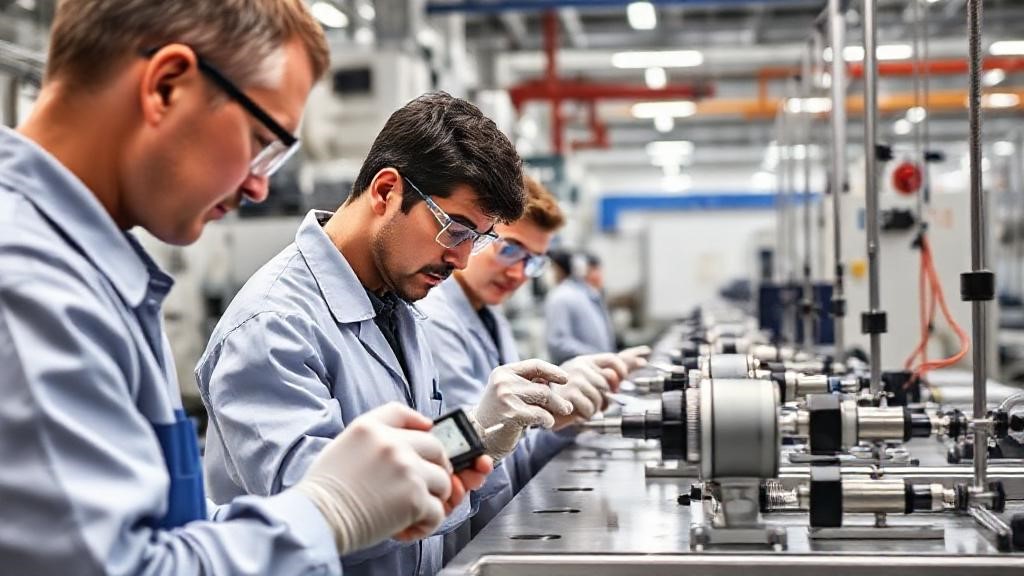If you have ever found equipment that is out of calibration, then you know it is not something to take lightly.
Whether you manufacture children’s toys or automobile tires, you know that the implications and ramifications of the decisions you make can be devastating for your company. Although the requirements from the ISO 9001 standard in regards to equipment found out of calibration are simple and succinct, make no mistake that this is not something to take for granted.
If you ensure that the processes for handling non-conforming equipment are in place and if you take into considerations the steps provided below, you will be ready to handle and perhaps be able to avoid out-of calibration conditions.
Equipment found “out-of-tolerance”

When you are notified that equipment being calibrated was found “out-of-tolerance”, the ISO 9001 standard requires you consider the product inspected with such equipment as a suspect product. Aside from quarantining the equipment for further adjustments and calibration, the first question you need to ask yourself or your team should be:
- Does the calibration data suggest the equipment was in really bad shape or way out of tolerance?
You need to review the calibration data in detail so that you could make an assessment on whether the equipment you used to inspect, test or approve product, will bring down your confidence that that product meets specifications. If this is the case, then your next questions should be:
- How much product was inspected or tested using that equipment?
- How much product that passed, was sent to inventory or was shipped to the customer?
Handling of equipment non-conforming or out of calibration should be a process that is planned and documented
If you don’t have confidence that your equipment found out of calibration was capable of producing good results, then you will have to segregate, quarantine, re-call, re-inspect or re-test (using known good in-calibration equipment) and repair or rework the product, as necessary. Some steps to take are listed below:
- Product that is in-process and has not yet been sent to stores needs to be segregated immediately for subsequent re-inspection or re-test.
- Product that is in the warehouse has to be pulled and re-tested or re-inspected.
- If the product has already been shipped, the standard requires that you have a process in place for how you are going to recall it. If it was already delivered to the customer, the question is how you are going to ask for the product back in order to inspect it or test it again. Perhaps if the customer uses your product as raw material and they have not used yet, then you may be able to go to their facility and conduct the inspection and test there. But if that is not possible, due to equipment and the setup you have in house, then you will need to proceed with your recall instructions and bring the product back to your facility for re-test or re-inspection.
In all cases, you need to have a plan in place regarding what your course of action will be after you re-test or re-inspect the product especially if the results are unfavorable. Basically, will you rework the product, will you be able to fix or repair or should you scrap and replace?
Handling of equipment non-conforming or out of calibration should be a process that is planned and documented, preferably in the same Control of Nonconforming procedure or similar procedure already required by the ISO 9001 standard.
Ensuring the working range is correct
What if after reviewing the data for your recently found out-of-tolerance equipment you realize that the range the equipment failed on, was a range you do not even use? It should make you think twice about whether the tolerance or ranges being used across the board are correct.
Very seldom does anyone get to implement a calibration system from scratch? Most often you inherit the calibration process or procedure, where the accuracy has already been decided by somebody else in the company –or worse yet –by the calibrating company or nobody at all. Now that the calibration process is in your hands, is your chance to ensure that the range and accuracy that equipment is calibrated to is correct and that is neither tight nor loose, but rather the right one for your use.
Preventive Steps: Importance of the data in the report
Too often when equipment is outsourced for calibration, you receive a Calibration Certificate lacking the calibration data. This does not seem to be a problem until you are reported equipment found out-of-calibration. While having the calibration data is important in these occasions, it is also important to have reviewed the data frequently to assess whether your equipment:
- Is being calibrated at the correct range
- Is found marginal out-of calibration
- Is in good shape every time is calibrated
- Can allow for larger time between calibrations
Equipment Calibration Scheduling in the Real World
For example, if you calibrate a certain piece of equipment every six months, and every six months when you get the results, the equipment is in perfect tolerance, you may decide to increase the calibration cycle to every year based on these results. Perhaps not immediately but after three or four cycles of calibration, you can safely increase your time between calibration for the specific equipment. However, even when you go to a one-year cycle, you will want to keep reviewing your calibration records to see if the equipment is always received in tolerance and if so, ensure the data is clearly confirming that.
If you continue to review your data, then you may decide that that one-year is good, but perhaps you might want to increase it to even a greater span, such as every one-and-a-half years. The thing is you don’t want to push the equipment to the limit; however, you also don’t want to have it so tight. We are talking about being economical but still having the confidence that the product being inspected or tested meets specifications.
On the other hand, if the equipment is not used very much, you might want to increase the calibration span, but again, you always have to rely on the data to see if it’s making sense to you and for your product. In some cases when equipment is used extremely infrequently, then it may be necessary to calibrate before use, rather to keep the equipment in a calibration cycle. However appropriate labeling and planning will be necessary to ensure that equipment is ready to use when needed.
What to report on the Calibration Certificate
 You -not the calibration technician or outsourcing company- need to decide what you want to see on your calibration report. If you plan well, then you will always have all the information available should discrepancies or out-of-tolerance conditions occur.
You -not the calibration technician or outsourcing company- need to decide what you want to see on your calibration report. If you plan well, then you will always have all the information available should discrepancies or out-of-tolerance conditions occur.
Here are some of the most important fields:
- Description of the equipment, equipment ID
- Location of the equipment. Who the owner is and if the equipment is assigned to certain employees.
- Calibration date and next due calibration date
- “As found” condition. This is very important and is essential for detecting if the equipment was found out of calibration or not. The idea is that when you first take the equipment in for calibration, you record whether the equipment was found in tolerance or out of tolerance.
- Calibration readings or the data. Sometimes calibration reports only contain the “as found” condition and state that the equipment was brought to tolerance, or is in calibration, but you don’t know if the equipment readings are marginal or if the equipment readings are actually out in several points of the range.
- Standard used to calibrate your equipment. The standard name, ID, description, the last calibration date, and the next due calibration, and whether the standard is traceable to NIST.
- The name of the person conducting the calibration
- The procedure or method used.
If you address these simple steps in your calibration process and management system procedures, then you will be prepared should any of your measuring and test equipment be found out of tolerance.
![]()
This article was published by Quality Digest on 10/05/2009.

This article was published on the November 2009 edition of the Automotive Industry Action Group (AIAG)’s Standard and Tools Newsletter.
Advance Your Knowledge with API and ISO Training from Mireaux University
Whether you’re preparing for certification or ready to take your team’s expertise to the next level, Mireaux training gives you the tools to succeed. Through Mireaux University (Mireaux-U) — our dynamic online learning platform — you can access course materials anytime, watch exclusive bonus videos, take your online exam, and download your certificate instantly. Experience expert-led training and real-world insights designed to empower your success. And link Mireaux University to this page:
ISO Training API Training



